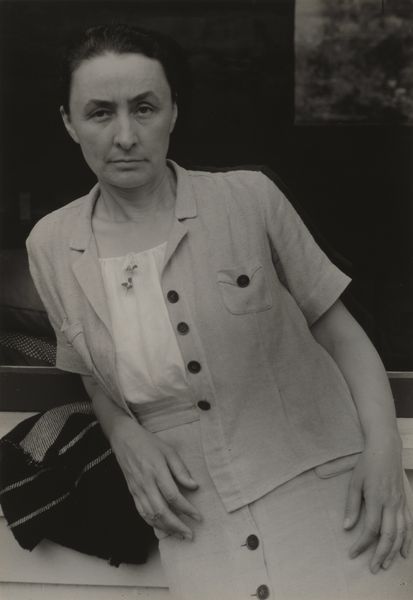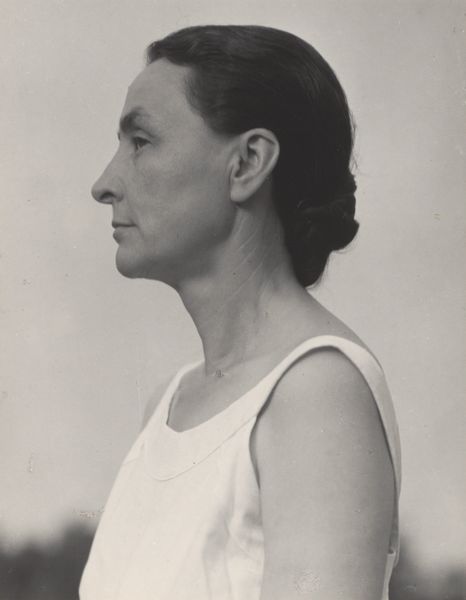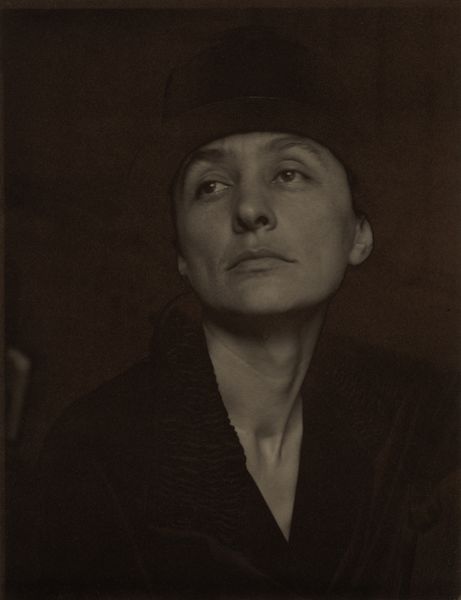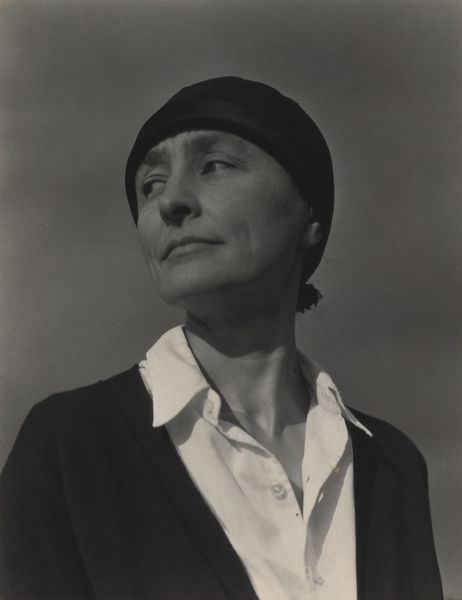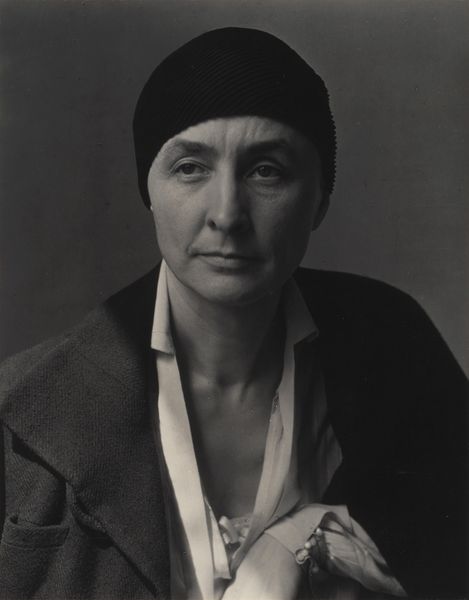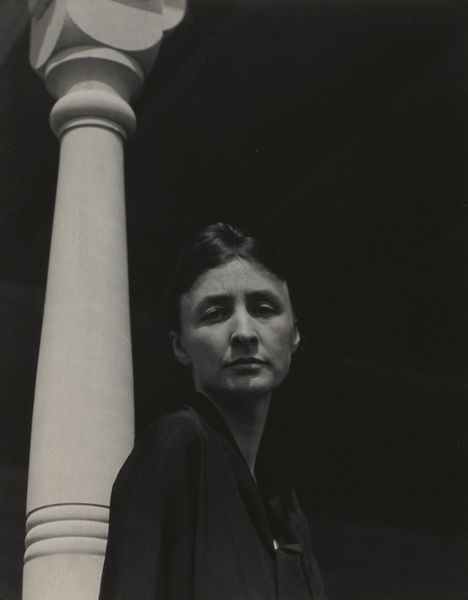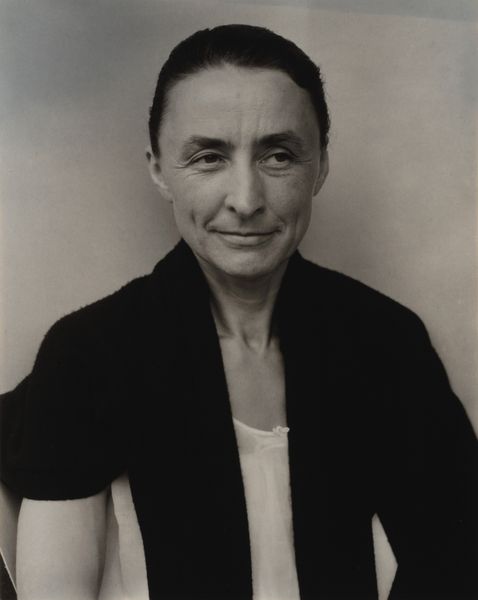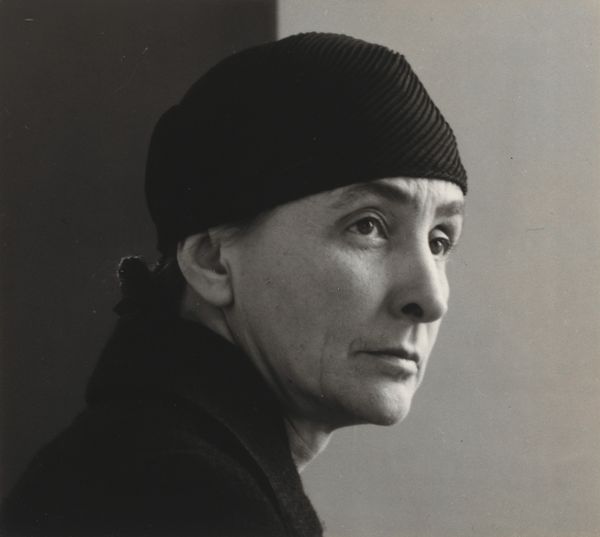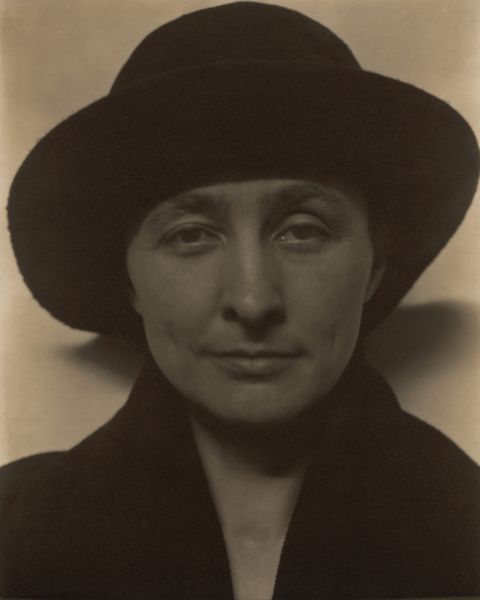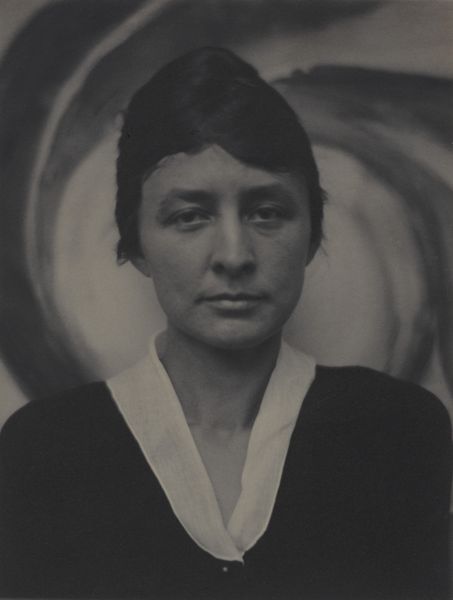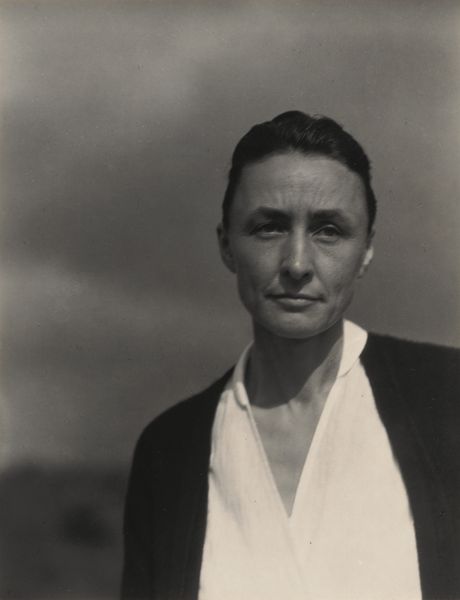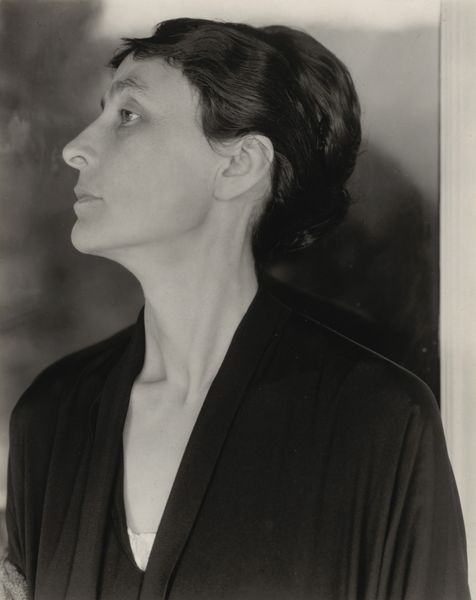
photography, gelatin-silver-print
#
portrait
#
photography
#
historical photography
#
black and white
#
gelatin-silver-print
#
modernism
#
realism
Dimensions: overall: 14.9 x 11.8 cm (5 7/8 x 4 5/8 in.)
Copyright: National Gallery of Art: CC0 1.0
Editor: Here we have Paul Strand's gelatin silver print, "Rebecca, New Mexico," from 1932. The subject's direct gaze and the stark lighting create a sense of both strength and vulnerability. How do you read this portrait, particularly in its historical context? Curator: The image, taken during Strand's New Mexico period, speaks volumes about the era’s artistic engagement with regional America. It is fascinating how Strand and others, like Georgia O'Keeffe, contributed to constructing the American Southwest as both a real and mythical place. Notice how "Rebecca’s" clothes, seemingly plain, ground her in a particular social class and perhaps even ideology. Does this aesthetic reflect or challenge societal norms of female representation at the time? Editor: I see your point. Her attire is rather practical, contrasting with the era's more embellished depictions of women in mainstream media. Do you think it's a commentary on the idealized images of women, or is Strand simply capturing her reality? Curator: It’s likely a bit of both. Strand was deeply interested in representing his subjects with dignity, resisting idealization. Considering the burgeoning social realist movements in art during the Depression, one can interpret this work as advocating for authentic portrayals, reflecting a broader political interest in the lives of ordinary Americans. What do you notice about her gaze? Editor: She's looking away, almost avoiding the viewer. Perhaps she embodies a certain defiance or independence of spirit. Curator: Exactly. That averted gaze resists easy consumption. Strand isn’t just making a pretty picture; he's presenting a complex individual within a specific socio-political frame. And the photograph becomes more than a likeness; it’s a statement about representation itself. Editor: I see it now; understanding the cultural and historical context enriches the image so much more. I appreciate you opening my eyes to the deeper narratives woven into what seemed like a straightforward portrait. Curator: It’s a good reminder that art rarely exists in a vacuum and that even seemingly simple portraits engage with complex social and political currents.
Comments
No comments
Be the first to comment and join the conversation on the ultimate creative platform.
